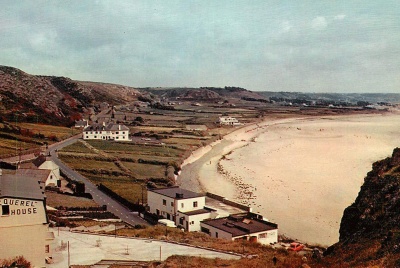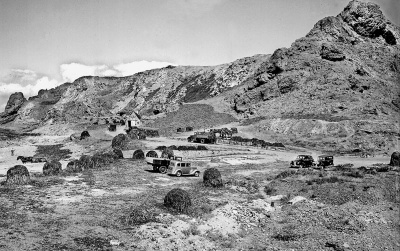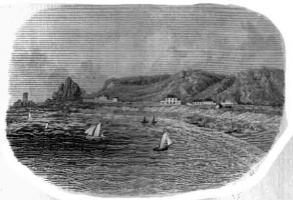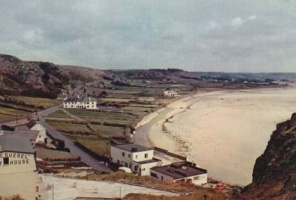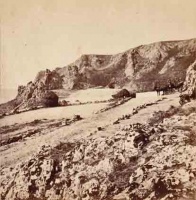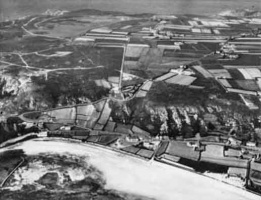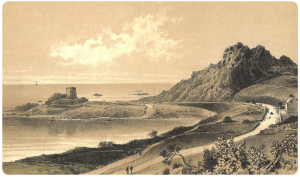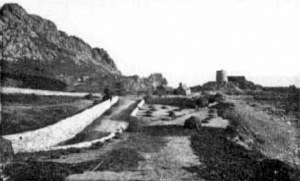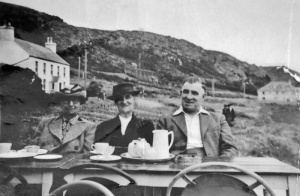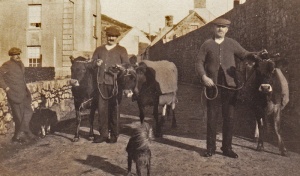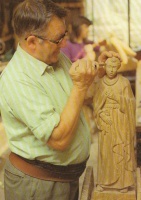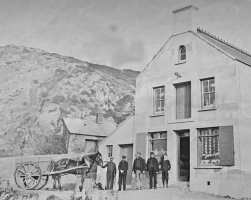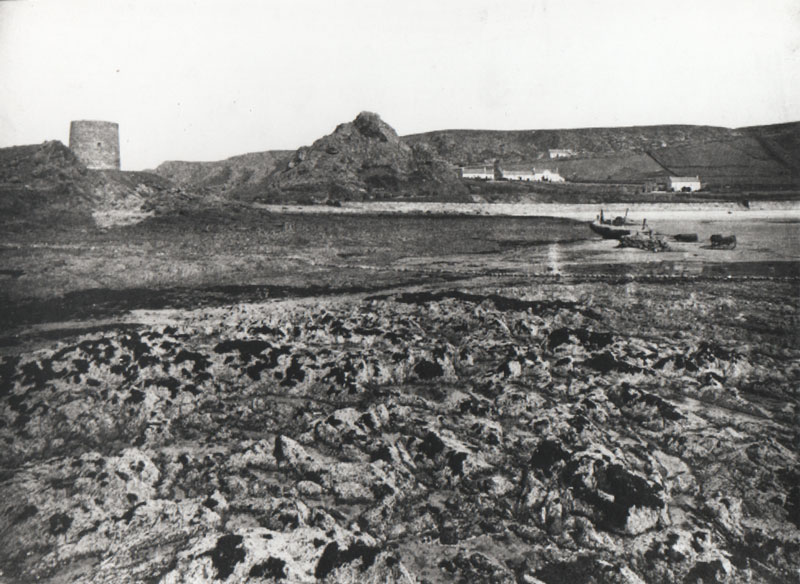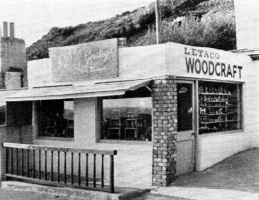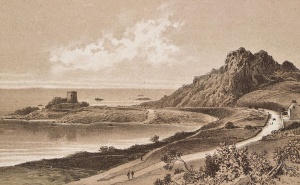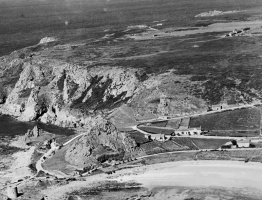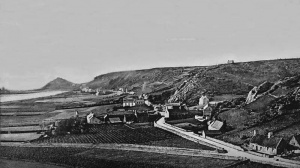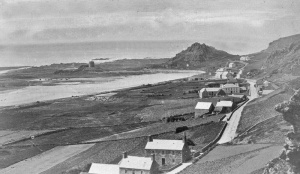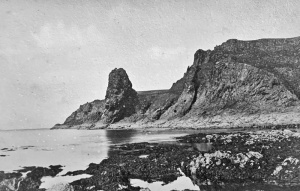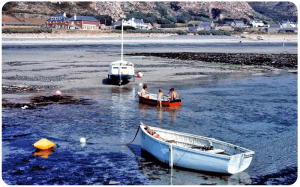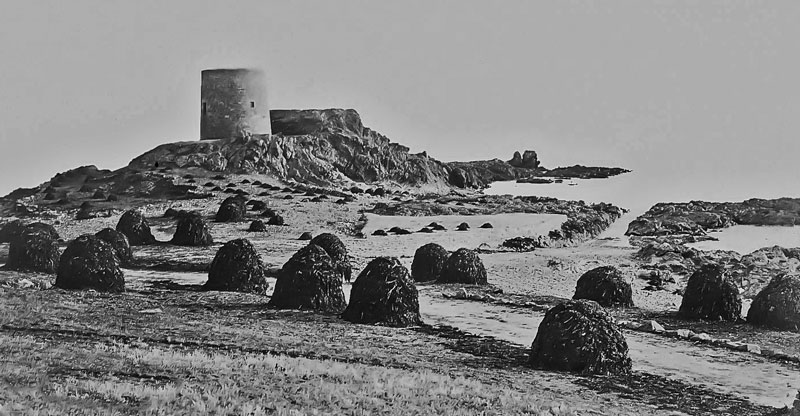L’Etacq – A Community of Sea and Stone
The story of L’Etacq is deeply affected by its surroundings. Its nutrient rich côtils and proximity to the sea has seen farming and fishing featuring heavily in its history. Also the rocky cliff faces, which gave L’Etacq its name, have proved a great source of stone for quarrying.
Murder case
However, that is not to say that nothing of significance has happened in the area. In the 1890s the community was shaken by an unsolved murder which came to be known as the ‘St Ouen’s Murder Case’. Other tragedies were also seen with the dangerous northwest coast claiming a number of victims through shipwrecks. Overall the study of L’Etacq is a fascinating insight into a local coastal rural community.
One of the earliest and most famous stories about L’Etacq is the tale of the lost Manor of La Brecquette. The house was owned by John Wallis and was surrounded on two sides by a forest of oak trees. The legend tells that in the mid-1300s a hurricane or flood hit L’Etacq and the manor and forests were engulfed and destroyed. It is said that when the tide is very low at St Ouen you can still see black tree stumps, all that remains of the oak trees that once surrounded the manor.
The 1795 Richmond Map shows evidence of dwelling places along Route de L’Etacq with agricultural fields throughout the area. In the 1850s major work was undertaken on the road to make it more accessible. Evidence of expansion can still be seen at L’Etacq with walls stamped with dates from the 1850s and 1860s to mark when they were built.
The Jersey Archive holds account books showing weekly salaries of people involved in the development of Route de L’Etacq from 1853. With the quarries in the area there was a ready-made supply of stone for the road.
Tracing those who were working on the roads by using the census it becomes clear that some of the residents of L’Etacq were involved in the improvement of the road surface. Many of the inhabitants of the L’Etacq area were registered within the census as general or agricultural labourers, so the opportunity to work on their doorstep was sometimes too good to turn down.
Edouard and Jean Gavey were L’Etacq residents who worked on the road at this time. Stephen Garde was another L’Etacq resident who made a living through the work.
Samuel Shepherd, a 56-year-old from England who lived locally, was registered as a stone quarryman journeyman in the 1851 census. He worked on the road throughout 1854.
Dangers
Quarrying could prove a dangerous profession. Looking through old press reports it is clear that accidents, whilst not a regular occurrence, were not uncommon. One such took place in January 1887. It is recorded in the almanacs that there was a quarry accident at L’Etacq involving a boy named Lesbirel. The hospital admissions show that Walter John Lesbirel, a 14 year-old boy, was admitted on 6 January for a fractured leg. Evidently a serious slip took place and Lesbirel suffered the injury as a consequence. In the 1901 census, when he was 28, his profession is listed as stonequarryman so the mishap cannot have put him off the work.
Crime scene photographs
L’Etacq may seem like a quiet and sedate area but there have been some grim occurrences in the past. The Jersey Archive holds some very early crime scene photographs from the mid-1890s of areas at Mont Pinel and L’Etacq where a murder took place. It became known within the local media as the ‘St Ouen’s Murder Case’.
On the evening of 22 December 1894 John Francis of St Ouen was making his way home to L’Etacq from Pooley’s Hotel at Greve de Lecq. At some point on the journey Francis was attacked with a blunt instrument and was left unconscious. The next morning he was found and was taken back to his family’s cottage but never regained consciousness. He died as a result of his injuries on Christmas Eve.
His murder was one of the most infamous cases of the time. There was a suggestion in the inquest that he may have been attacked by two or three men who had escaped in a carriage. On 5 January 1895 Ernest Leonard, a Frenchman, was charged with his murder. He faced trial in the Royal Court. The prosecution alleged that Leonard’s motive for the crime was jealousy – John Francis had been a family friend of the girl that Leonard had been engaged to marry. Her parents had forbidden her to marry Leonard and the engagement had been broken off.
Leonard admitted that he was in the area between 2 and 3.40 but was simply picking up flotsam. He admitted that he passed by where Francis was found at 3.30 but did not see him there. After a number of weeks of trial in the Royal Court the jury at the Criminal Assizes found Leonard not guilty and he was released without charge.
In 1881 Leonard is listed as living at West End, L’Etacq, the site of an unfortunate accident ten years later. Whilst replacing slates on the roof of the house, Thomas England, a plasterer, slipped and fell a distance of 30 or 40 feet headfirst. He fractured his skull and was taken to the Hospital unconscious. He was finally released two months later. England was extremely fortunate to survive. It was not the first time he had a close brush with death. Newspaper reports record that he was also the only survivor of an earlier accident in which four men were drowned by the capsizing of a boat at Grève de Lecq.
Vraic collection
The beach is an important part of L’Etacq. For many years it was a prime site for the collection of vraic and there is still some evidence of markers on the rocks that were used in this practice and the paths followed to cut it. Vraic collecting is a long tradition in Jersey and vraic was the prime fertiliser for the farmers of the Island. Sites for drying vraic were highly sought after. The Jersey Archive holds a contract between Jean de Carteret, the Seigneur of Vinchelez de Haut, and Jean Le Cornu from 1710. It records the lease in perpetuity from the Seigneur to Le Cornu of half a côtil at L’Etacq for the sum of 2 cabots of wheat and 2 hens a year. The field was to be used for the drying of vraic.
This practice continued into the late 20th century. Florence Ellen Le Boutillier’s will which was proved in the 1960s records the bequest of two pieces of land for the drying of vraic at L’Etacq, which she had inherited from her father.
Vraicing was not the only thing that took place on the beach at L’Etacq. In the 19th century horse race meetings used to take place on the sands of L’Etacq. A variety of events took place at the meetings including one open to horses that had not won a race in the Island and one open to all horses belonging to farmers in Jersey.
Shipwrecks
The sea could bring tragedy as well. In 1879 a Guernsey cutter, the Reindeer, was shipwrecked near L’Etacq. The vessel struck rocks in St Ouen’s Bay. Captain George Joseph Piperell, who was aged just 24, and his four crewmen all died and were washed ashore among the rocks near the lead mines beyond L’Etacq. In December 1881 the master of the French sloop Union, Captain Cardin, suffered a similar fate. Mr Leonard and Mr Nicolle went out to the ship in order to help but when Cardin attempted to swim to the boat he was dragged under when his heavy boots filled with water and was drowned.
- Coast: L'Etacq, one of the stops on our coastal tour of Jersey NEW
Click on any image to see a larger picture
A closer view of the same, typical Jersey, granite cottage - picture believed to be by Albert Smith. The cottage has the datestone 1753 IHB ♥ ELGL for Jean Hubert and Elizabeth Le Gresley
1870s Photograph by Ernest Baudoux
1872 Photograph by Ernest Baudoux
Fowler's Picnic Room at L'Etacq, photographed in the 19th century by Ernest Baudoux




